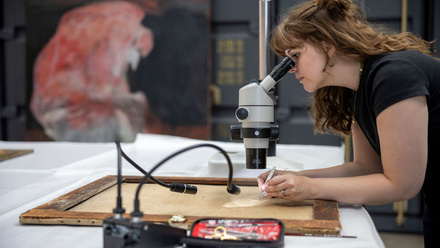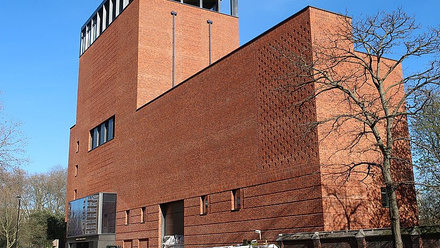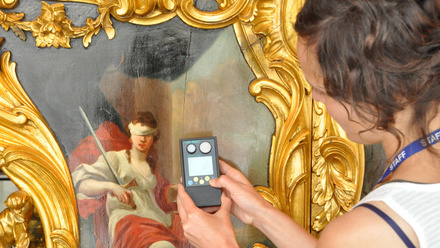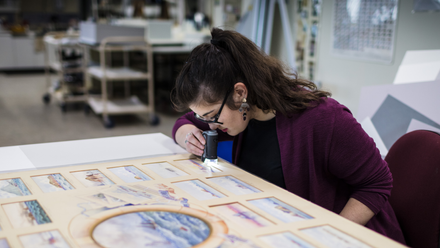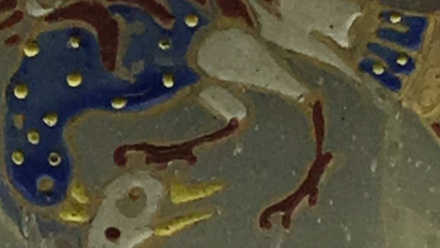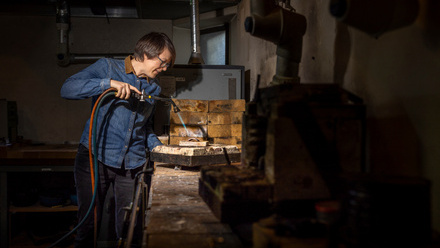As an Icon intern undertaking a BUTE memorial Funded one year internship at National Trust Scotland, I have a unique opportunity to work on a varied range of projects throughout the portfolio of The National Trust for Scotland. The House of Dun Courtyard project not only offered a range of activities that would allow me to build on my existing skill set, it also meant I was able to work with an independent project conservator and former Icon intern Lyndsay MacKinnon. This opportunity gave me the chance to not only see what is involved in implementing a project of this nature, but also allowed me gain invaluable knowledge and experience from someone who has been in my position. The project itself involved rehousing some of the Angus Folk Museum collection (currently in storage) and reinterpreting it for a new visitor experience within the newly renovated courtyard buildings of the House of Dun, a William Adam designed Georgian House, situated in Angus overlooking the Montrose Basin.
Inventory and assessment
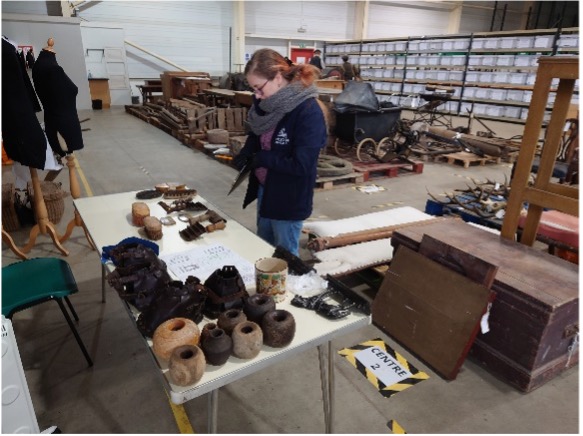
Checking off located items and assessing treatment requirements
My first task was finding the objects for two display cabinets that were to be situated in the stables building in the south western most corner of the courtyard. Cabinet one contained artifacts connected to ploughing while cabinet two related to cobbling. Though many of the objects were primarily metal other materials such as leather, wood, and textiles were also present, so a varied range of cleaning and treatment techniques needed to be considered. Being primarily utilitarian and agricultural in nature thought needed to be put into how ‘clean’ an object should be, balancing with the authenticity of the objects, what they represent, and the possible deterioration risks posed when leaving ‘historic dirt’ in situ. For example, objects such as the ploughing competition prizes and medals in cabinet one could be displayed in ‘pristine condition’ whereas the hobnail boots and tools in cabinet two could seem out of place and perceived as ‘too clean’ and unused if all the soiling were to be removed.
Cleaning and treatment
Once a base level of clean had been established for each object, and any consolidation and other remedial treatments considered, the task of actually removing dust, soiling, and active corrosion could begin. One of the things I find incredibly enjoyable about metals in particular, is the difference that can be seen just from removing the active corrosion. Though time consuming the tools and toolbox itself were both satisfying and challenging as they contained several different materials.
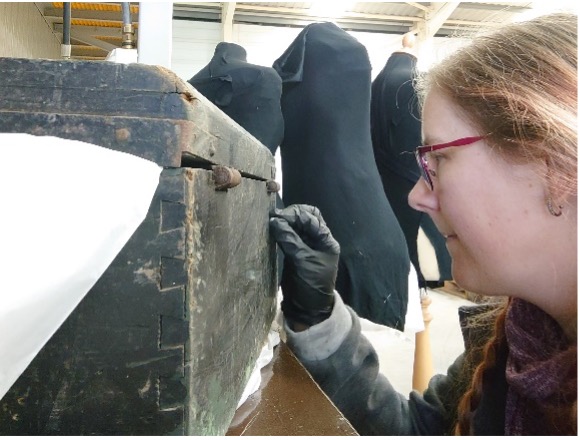
Vacuumed to begin with inside and out, the toolbox was also brushed down using a soft bristled brush, then the surface soiling was removed using a simple pencil eraser. Having used this technique before on a larger scale I was confident it would be effective at removing substances that could pose future risk to the object, while ensuring the painted surface was not damaged. The tools themselves varied in levels of corrosion with the ones stored in the webbing dividers in the lid being more heavily corroded on the side in contact with the wood and behind the webbing strip, which is no surprise as these areas would attract and hold moisture. Once treated the meatal items were all given a surface coat of microcrystalline wax to reduce the corrosion risk due to the environmental conditions of the display space being unstable, with high humidity. They were then repackaged in tissue to prevent any dust or dirt redepositing before being transported to their final destination at House of Dun Courtyard building.

Observations and thoughts
The utilitarian nature of the objects for this project really appealed to me as I was able to work with multiple materials and the approach to their care and conservation needed to adaptive to take into consideration previous use. Since beginning my career as conservator the thing that has fascinated me is the history of an object as told through its use, the scuffs, smears, and dents. All of these marks give an indication of that use and, at least for me, seeing those aspects preserved, and in some cases even added to for objects still in use, is satisfying.
All being well visitors should be able to enjoy the new experience at both the house and courtyard once again in July 2021.

